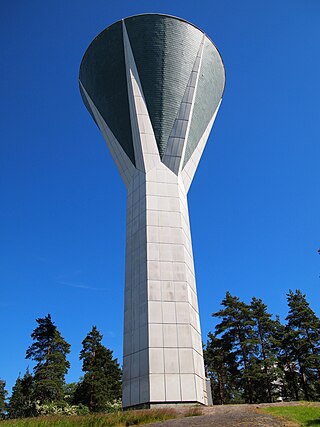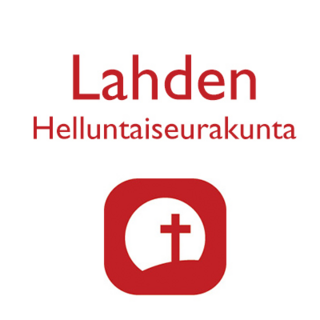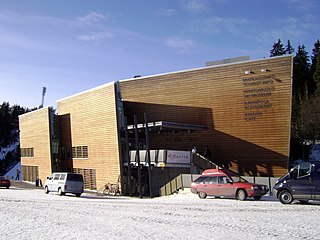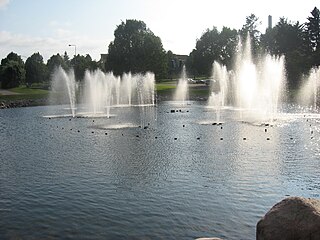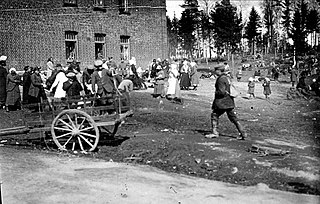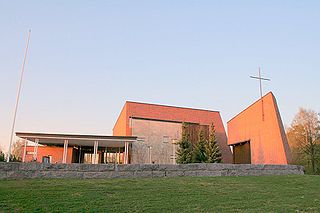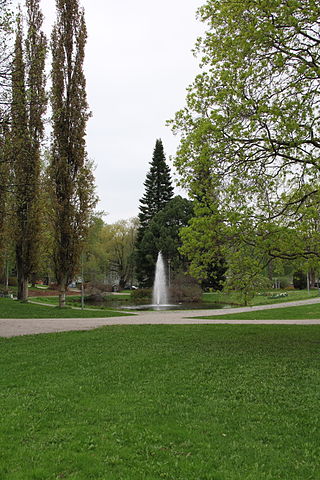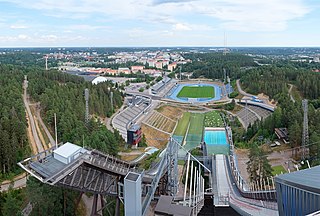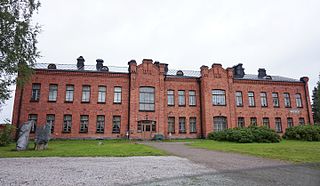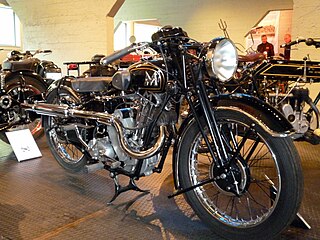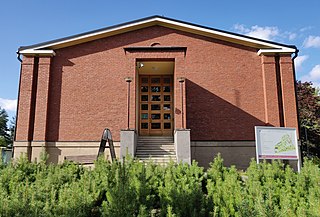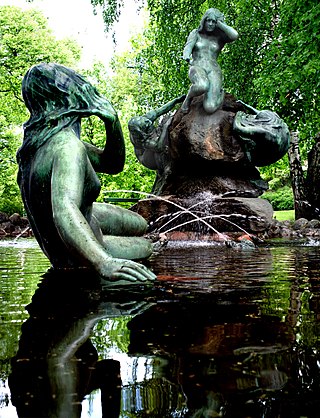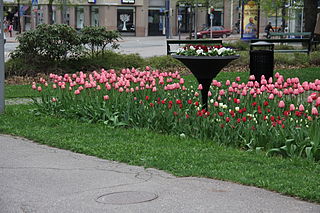22 Sights in Lahti, Finland (with Map and Images)
Legend
Welcome to your journey through the most beautiful sights in Lahti, Finland! Whether you want to discover the city's historical treasures or experience its modern highlights, you'll find everything your heart desires here. Be inspired by our selection and plan your unforgettable adventure in Lahti. Dive into the diversity of this fascinating city and discover everything it has to offer.
Sightseeing Tours in Lahti1. Mustankallion vesitorni
Mustankallio water tower lies in the Kiveriö district of Lahti, Finland, and stands 50 metres (160 ft) tall. Completed by a local company in 1963, it includes two water reservoirs, a penthouse meeting facility complete with sauna, and a viewing platform. The design, which features pre-stressed concrete elements and asbestos cement cladding, was a departure from the steel water tower structures commonly built in the region. When commissioned, its original name was the Metelinmäki Water Tower. It has been described as crocus-like in appearance and complimented on its elegance.
2. Hakkapelittain kotiinpaluu
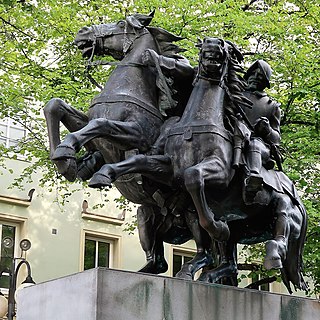
The Homecoming of Hakkapeliitta is a sculpture by Pentti Papinaho located in the centre of Lahti. It is an equestrian statue depicting two Hakkapeliittas returning home. Today, the work is located south of Lahti Market Square, at the intersection of Aleksanterinkatu and Mariankatu.
3. Mikael Agricola
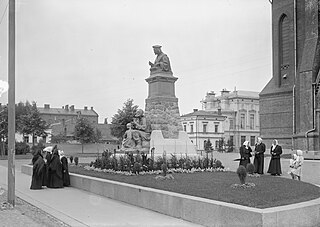
The Mikael Agricola Memorial is a half-body portrait of Mikael Agricola made by Finnish sculptor Emil Wikström, unveiled in 1908 in front of Vyborg Cathedral. The original bronze cast disappeared in the last days of the Winter War in 1940 and, despite subsequent searches, has not been found. Four reprints of the statue have been made in Turku (1910), Lahti (1953), Pernaja (1959), now part of Loviisa, and Vyborg (2009).
4. Mannerheimin ratsastajapatsas
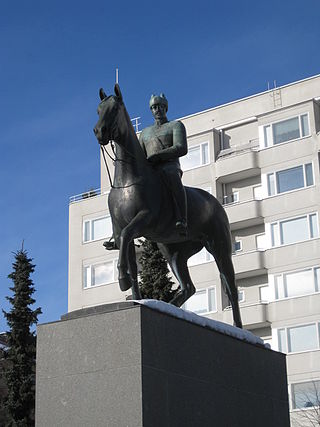
The equestrian statue of Mannerheim in Lahti is a statue of Marshal Carl Gustaf Emil Mannerheim on horseback next to the Lahti railway station. The statue was made by sculptor Veikko Leppänen from Lahti and it was unveiled on 19 December 1959, about six months earlier than the equestrian statue in Helsinki. The work is the first equestrian statue of Mannerheim unveiled in Finland.
5. Lahden helluntaiseurakunta
Lahti Pentecostal Church is a Pentecostal church in Lahti, Finland. The congregation has approximately 1,200 members. The leading pastor of the church is Waltteri Haapala. There are other paid employees, but the church is based on strong volunteer work.
6. Ski Museum
Lahti Ski Museum is a sports museum located in Lahti, Finland, specialising in skiing and other winter sports. It is situated in the city's main sports complex adjacent to the Salpausselkä ski-jumping venue.
7. Vesiurut
The Lahti Water Organ is a musical fountain located in Kariniemi Park in Lahti, about 300 meters west of the old bus station. It was built by Lahti Energia in 1997. The water organ is operational from June to November.
8. Punaisten muistomerkki
Hennala camp was a concentration camp operating from the beginning of May 1918 to 15 September 1918 in the Hennala Garrison in Lahti, Finland. It was set up for the Reds captured by the White Army after the Finnish Civil War Battle of Lahti.
9. Lahden Historiallinen museo
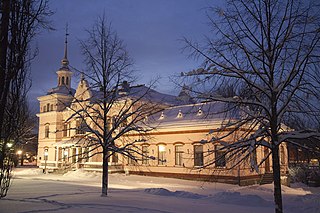
The Lahti History Museum is a cultural history museum operating under the Lahti Museums, which also serves as the regional museum responsible for Päijät-Häme. Founded in 1924, the museum's exhibition spaces have been located in the main building of Fellman Manor near the centre of Lahti since 1968. The task of a historical museum is to collect, record, study, exhibit and publish the historical, cultural-historical and ethnological material and spiritual traditions of its operating area.
Wikipedia: Lahden historiallinen museo (FI), Website, Instagram, Facebook
10. Mukkulan kirkko
Mukkula Church is the parish church of Keski-Lahti, which, as the name implies, is located in the residential area of Mukkula. It is also one of the churches belonging to the Lahti Parish Union. The church was built in 1993 and it was designed by Arkkitehtityö Oy Juhani Boman. The material is a brick resembling hand-beaten brick. The church hall seats 200 people, and the parish hall behind the transfer wall provides more space if needed.
11. Fellmanninpuisto
Fellman Park was built on the former land of Fellman Manor in the 1950s in the centre of Lahti. The park is approximately five hectares in size and is bounded by Ståhlberginkatu, Kyösti Kallion katu and Paasikivenkatu.
12. Vapauden Hengetär
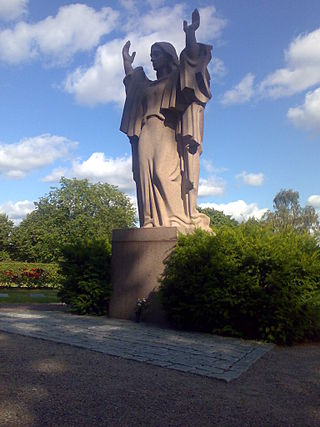
The Spirit of Freedom is a statue designed by sculptor Wäinö Aaltonen, located in Church Park in Lahti on the graves of heroes. The statue is made of Vehmaa's red granite. The statue was unveiled on June 1, 1952.
13. Lahti Sports Center
Lahti Sports Centre is a significant sports centre in Salpausselkä, Lahti. The sports centre has the Lahti Stadium, which serves as an athletics and football stadium in summer and a ski stadium in winter. Next to it are the Lahti ski jumps, which were built using the paddle board next to the hillside, and the Lahti ice rink. The sports centre serves as the venue for the annual Salpausselkä Games. Skiing and walking trails depart from the sports centre in the direction of Salpausselkä.
14. Punavankien muistomerkki
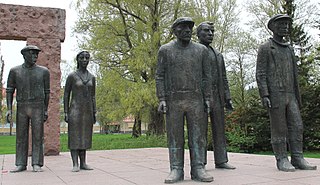
The Red Prisoners Memorial is a large-scale work of art designed by sculptor Erkki Kannosto in granite and bronze, located in Fellman Park in Lahti. On the site of the park in 1918 was a prison camp called Fellman's field. An invitational competition was held in 1976 to acquire the memorial, which Kannosto won. The work was erected by the workers' organisations in Lahti.
15. Sotilaslääketieteenmuseo
The Museum of Military Medicine is a museum focusing on military medicine, opened in 1983 and housed in a red brick building from the early 1900s in Lahti, next to the former Hennala barracks area. The museum presents medical care during the Finnish wars of 1939–1945 and the peacetime military health care of the Finnish Defence Forces with objects, photographs and statistics.
Wikipedia: Sotilaslääketieteen museo (FI), Website, Facebook
16. Malva - Lahden visuaalisten taiteiden museo
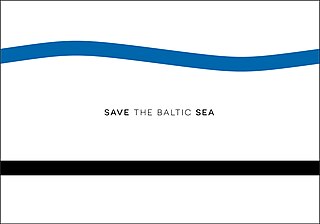
The Lahti Museum of Visual Arts Malva merged the previously independent Lahti Poster Museum and the Lahti Art Museum into a new museum complex. The museum is located in the Malski Centre in Lahti, which opened in the premises of the former Malt Drink factory. The museum opened in spring 2022.
Wikipedia: Lahden visuaalisten taiteiden museo Malva (FI), Website, Instagram, Facebook
17. Motorcycle Museum
Finland's Motorcycle Museum is a museum located in Lahti, Finland. It is the only museum in Finland specializing on motorcycles. Especially the museum has on display restored world-famous motorcycles, national racebikes and mopeds. The motorcycle museum's collection includes over 100 motorcycles and historical items related to motorcycling. It also has yearly changing themes. Finland's Motorcycle Museum was founded and is being owned by a local entrepreneur Riku Routo.
Wikipedia: Finland's Motorcycle Museum (EN), Website, Instagram, Facebook
18. Radio- ja tv-museo Mastola
Radio and TV Museum, also known as Mastola, is a museum located in Lahti, Finland. The museum is near the city centre on the Radiomäki hill. Next to the museum building are two 150-meter-high radio masts built in 1927. The masts are a well-known landmark and a symbol of the city. The museum operates in a radio station building designed by a Finnish architect Kaarlo Könönen and built in 1935.
Wikipedia: Radio and TV Museum (Lahti, Finland) (EN), Website, Instagram, Facebook
19. Vauhtia
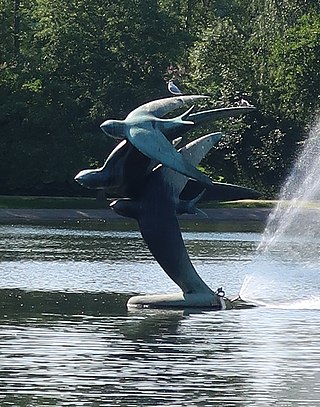
Vauhtia is a bronze fountain sculpture created by sculptor Oskari Jauhiainen, which the City of Lahti acquired with bequest funds in 1954. The work depicts three flying swallows. The sculpture was created as part of a competition to find a suitable sculpture for the Lahti Market Square. Jauhiainen won the competition in 1951. Jauhiainen was assisted in the creation of the sculpture by architect Eero Eerikäinen. The Vauhtia sculpture was moved from its original location in the Market Square in 1961 to its current location in Pikku-Vesijärvi. The movement and flight of the work are said to symbolize Lahti, which is experiencing its boom.
20. Aino
Aino is Emil Wikström's bronze-sculpted fountain from 1912. It is located east of Fellman Manor in Lahti. The fountain was originally located in Helsinki, from where it was moved to its current location in 1949. In 1908, Wikström received an order from businessman Uno Staudinger for the Aino fountain, which was erected in the small garden of Villa Johanna in Staudinger on Laivurinkatu.
21. Erkonpuisto
Erkonpuisto is a park located in the city centre of Lahti. It is named after the Finnish poet Juhana Heikki Erkko (1849–1906). The park has a fenced playground and four sculptures. The sculptures are Essi Renvall's monument to J. H. Erkko, Jussi Mäntynen's Moose sculpture (1955) and Emil Wikström's monument to Mikael Agricola from 1953. At the southern end of the park is Veikko Leppänen's statue of J. K. Paasikivi (1961).
22. Eetu Salin
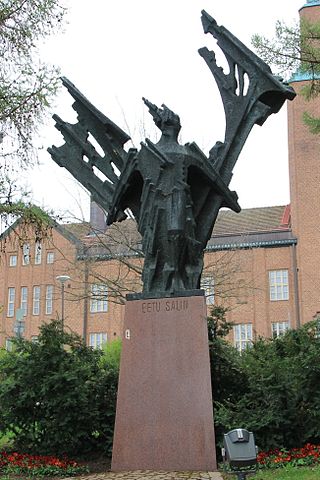
The Eetu Salin Memorial is a statue erected in memory of Johan Edvard "Eetu" Salin, an activist, journalist and Member of Parliament of the Finnish labour movement, in the Mariankatu park in Lahti. Salin, one of the founding members of the Social Democratic Party of Finland, was born in Asikkala, a neighbouring municipality of Lahti, in 1866 and, after training as a shoemaker, worked in Lahti. The bronze statue is located in a park that is an extension of Mariankatu near the City Hall. The acquisition of the memorial statue was proposed by the Lahti Sos.-dem Municipal Association.
Share
How likely are you to recommend us?
Disclaimer Please be aware of your surroundings and do not enter private property. We are not liable for any damages that occur during the tours.
